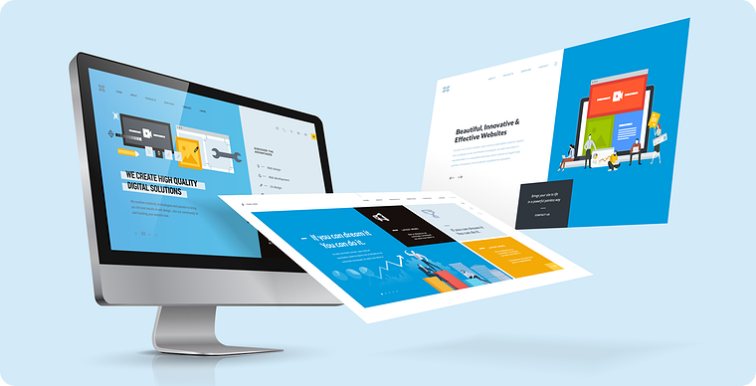Enhance user satisfaction with our article on expert website navigation design. Dive into strategies for seamless interactions, user-centric principles, and innovative techniques to optimize your website’s performance. Master the art of navigation for a more engaging and accessible online experience.
In the dynamic landscape of the digital realm, user experience stands as the cornerstone of online success, with website navigation design playing a pivotal role in shaping this experience. Welcome to our comprehensive guide on optimizing user experience through expert website navigation design. Navigating the intricacies of web design requires a thoughtful blend of aesthetics and functionality, and this article serves as your compass. We will explore user-centric principles, innovative techniques, and the art of striking the perfect balance to ensure seamless interactions. Whether you are a designer seeking to refine your skills, a developer aiming for enhanced accessibility, or a business owner focused on user satisfaction, our insights provide a roadmap to elevate your website’s performance. Join us on this journey to transform your online presence and create an immersive, user-friendly environment that captivates and retains your audience.
What is Website Navigation?
Website navigation involves the process of exploring online resources by clicking through the pages comprising a website. Users employ a web browser, clicking on links that lead them to different pages. Two types of links facilitate website navigation: internal links, connecting to pages within the same website, and external links, directing users to other websites. Effective navigation can be achieved by organizing these links within a menu framework utilizing hyperlinked text or navigational buttons strategically placed throughout the website. This approach ensures a seamless and user-friendly navigation experience, enabling visitors to explore the content and resources available on the website efficiently.
Significance of website navigation
Website navigation holds immense significance as it not only contributes to the online aesthetics of an organization but also profoundly influences user perceptions and interactions. A clean and well-structured navigation system serves as the digital face of an organization, implying a parallel commitment to organization and clarity. Beyond aesthetics, user-friendly navigation plays a crucial role in shaping users’ feelings by enabling swift and obstacle-free access to information. A positive user experience, devoid of frustrating search barriers, fosters a favorable view of both the website and the underlying organization.
Moreover, efficient navigation contributes to prolonged visit durations, encouraging users to explore and engage further. In contrast, a poorly navigable site may prompt users to bounce away quickly. Additionally, the impact of navigation extends to search engine optimization, facilitating effective crawling and indexing by search engines, thereby enhancing visibility and search result placement. Furthermore, seamless navigation directly correlates with increased purchase rates, as users who effortlessly locate desired products or services are more inclined to complete transactions, highlighting the integral role of website navigation in shaping both user satisfaction and organizational success.
Top Tips For Website Navigation
Place the menu in a location that makes sense intuitively:
Meeting user expectations involves placing the menu on the top or left side of the home page, the standard position for most websites. This assurance helps users believe that the information they are looking for is easily accessible with just a few clicks. Conversely, nonstandard menu placement may need to be clarified and imply that finding information on the site is challenging, potentially leading users to bounce from the site.
Incorporate visual elements into the content:
Graphical elements on websites often exhibit interactive responses, such as icons transforming into animations or drop-down menus opening upon pointer hover. Thoughtful placement can enhance a website with engaging visual enhancements, yet these elements also have the potential to be disruptive, hindering seamless navigation.
Make sure that links are easily noticeable:
The number of links visible at a given moment can impact the user’s decision to remain on a site or bounce. Displaying 20 links in the menu might overwhelm users. It is often recommended to present succinct navigation on the main menu and introduce additional links on interior menus that become visible as users click through.
Arrange links carefully and consider their order:
The arrangement of links in a menu has a significant impact on user behavior. Users tend to focus more on the first and last items in a menu, with their attention diminishing towards the middle, which is known as the serial position effect. Therefore, strategically organizing menu options by placing the most frequently used links at the beginning and end and less crucial links in the middle can enhance user experience and navigation. For instance, in an online health store specializing in supplements and groceries, placing “Supplements” at the far left or top and “Groceries” at the far right or bottom ensures a user-friendly hierarchy, with less crucial links positioned in the center of the menu.
Incorporate a footer section:
Users anticipate specific elements of website navigation to be located in particular positions beyond just the menu. For instance, they may anticipate finding a footer at the bottom of the page featuring minor links for aspects like shipping information, frequently asked questions and career opportunities. Placing these elements where users expect them in your website navigation not only meets their needs but also fosters ongoing exploration of your site.
Employ distinct designs for various platforms:
Designing navigation for desktop and mobile platforms involves addressing distinct requirements. Desktop sites can utilize more space due to larger text and easier mouse-click interaction. On the other hand, mobile sites, constrained by limited space, must efficiently present essential information. To accommodate these differences, it may be necessary to develop separate menu designs tailored to each platform, ensuring optimal navigation for diverse user experiences.
Refrain from using concealed menus:
Hidden menus pose dual challenges for SEO and usability. Search engines may struggle to crawl and index their data, potentially impacting search result rankings. From a user standpoint, hidden menus, especially drop-downs, can be confusing, leading to inadvertent clicks on the wrong links when the menu covers the desired one. Standard menu links to separate pages often offer better usability. Yet, mega menus, like those grouping computer products by brand or type, can be exceptions, providing a more comprehensive display of options for users.
Utilize link titles that provide clear descriptions:
Titles like “About Us” and “Products” might lack the specificity needed for search engine ranking or to provide users with an optimized navigation experience. Employing more descriptive menu titles can effectively convey to users what your offerings are. For instance, an eco-friendly clothing retailer could substitute “About Us” with “Our Green Goal” and segment products into distinct links for shirts, pants, undergarments, and accessories.
Restrict the number of options in the main menu:
Displaying an excessive number of links in the main menu can visually overwhelm users, potentially discouraging them from thoroughly reviewing the menu content and causing them to overlook crucial information. To enhance user experience, it is advisable to limit the main menu options to a range of five to seven links, with additional links featured on internal pages.
Incorporate icons or buttons to represent links:
To elevate the visual appeal of link options, integrate universally understood icons and buttons. Opt for symbols like a phone icon to convey “contact information,” and consider positioning icons to the left of associated words, akin to bullet points. This not only enhances the menu’s visual interest but also ensures that users receive the fundamental information necessary for effortless navigation.
In conclusion, mastering the art of website navigation design is paramount for delivering an exceptional user experience. By prioritizing clean and intuitive menu structures, implementing universally recognized icons, and strategically organizing links, designers can guide users seamlessly through the digital landscape. The significance of meeting user expectations in menu placement and steering clear of hidden menus cannot be overstated, as these factors directly impact user satisfaction and site engagement. Moreover, recognizing the distinct design requirements for desktop and mobile platforms allows for tailored solutions that cater to diverse user preferences. In the dynamic realm of online interactions, optimizing website navigation emerges as a fundamental aspect that not only influences user perception but also plays a crucial role in search engine visibility and overall success in the competitive digital landscape.





